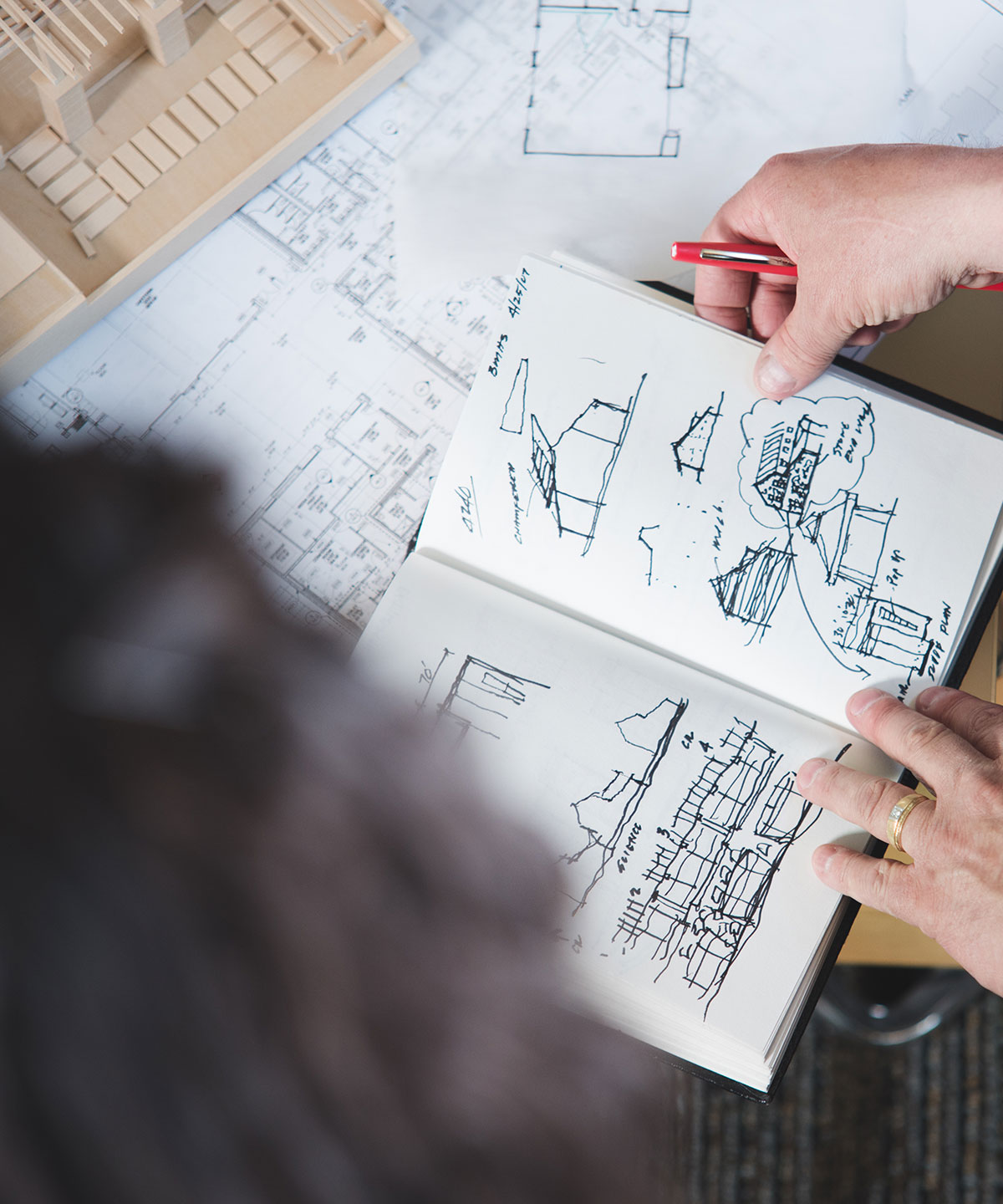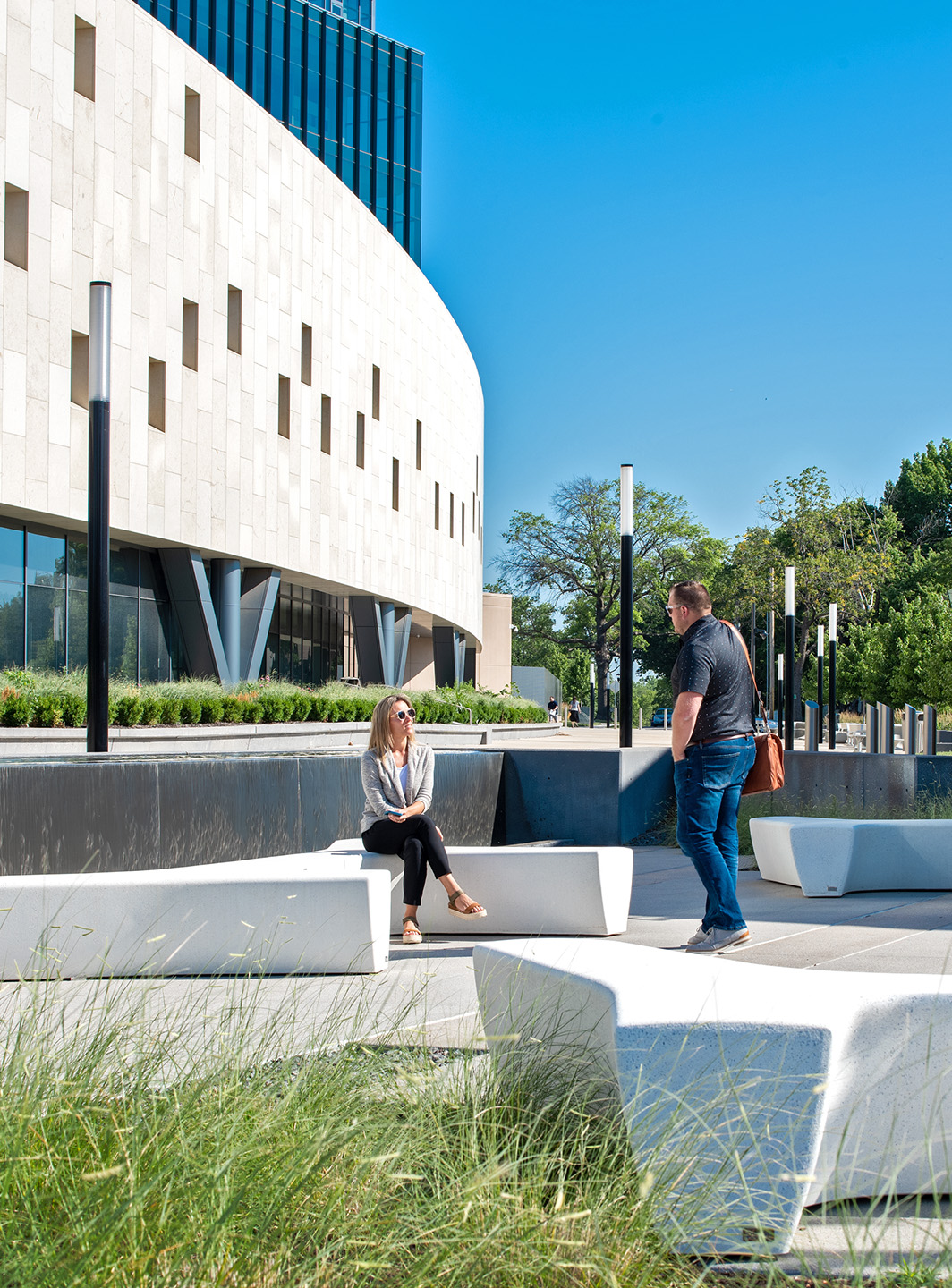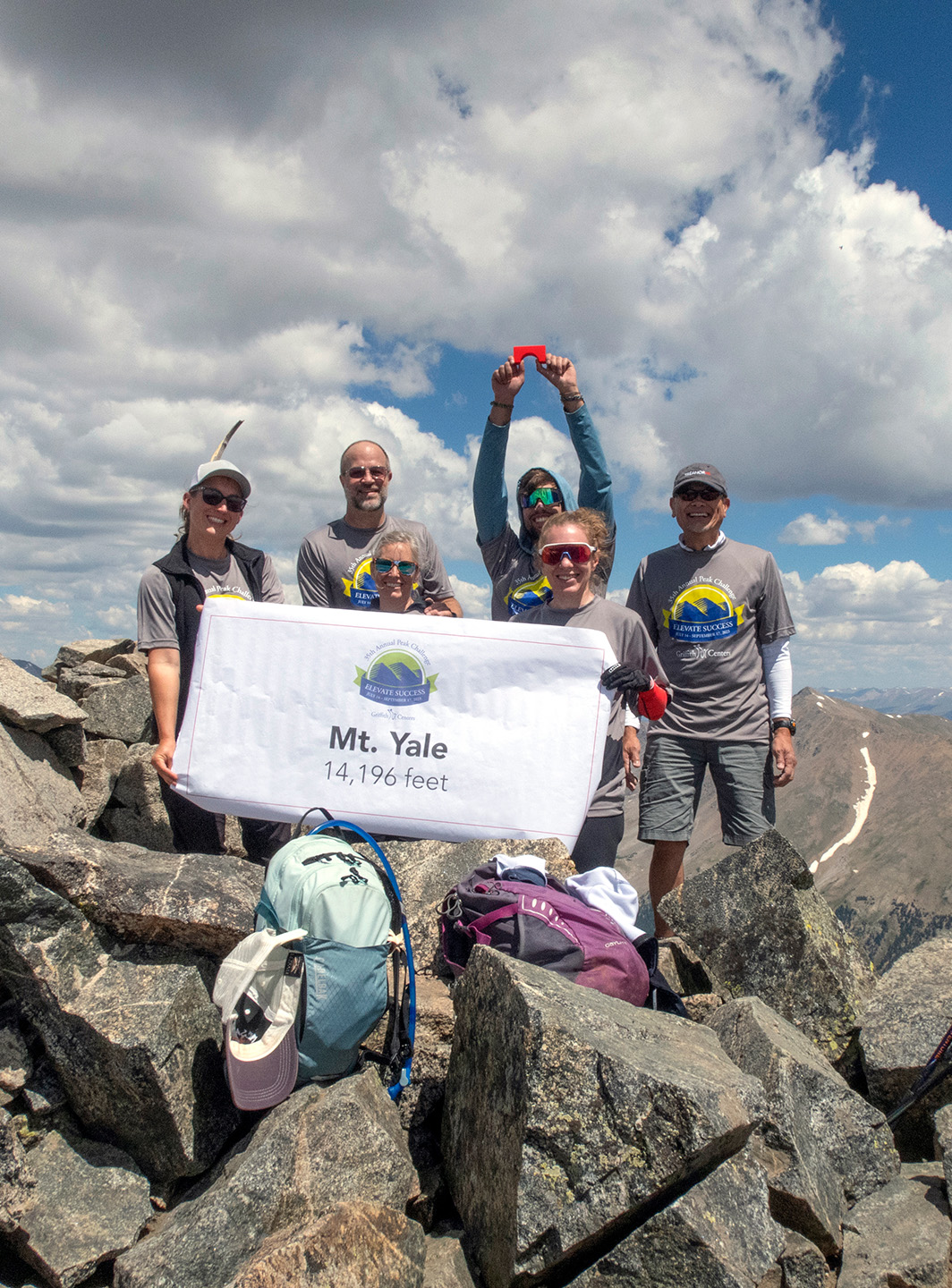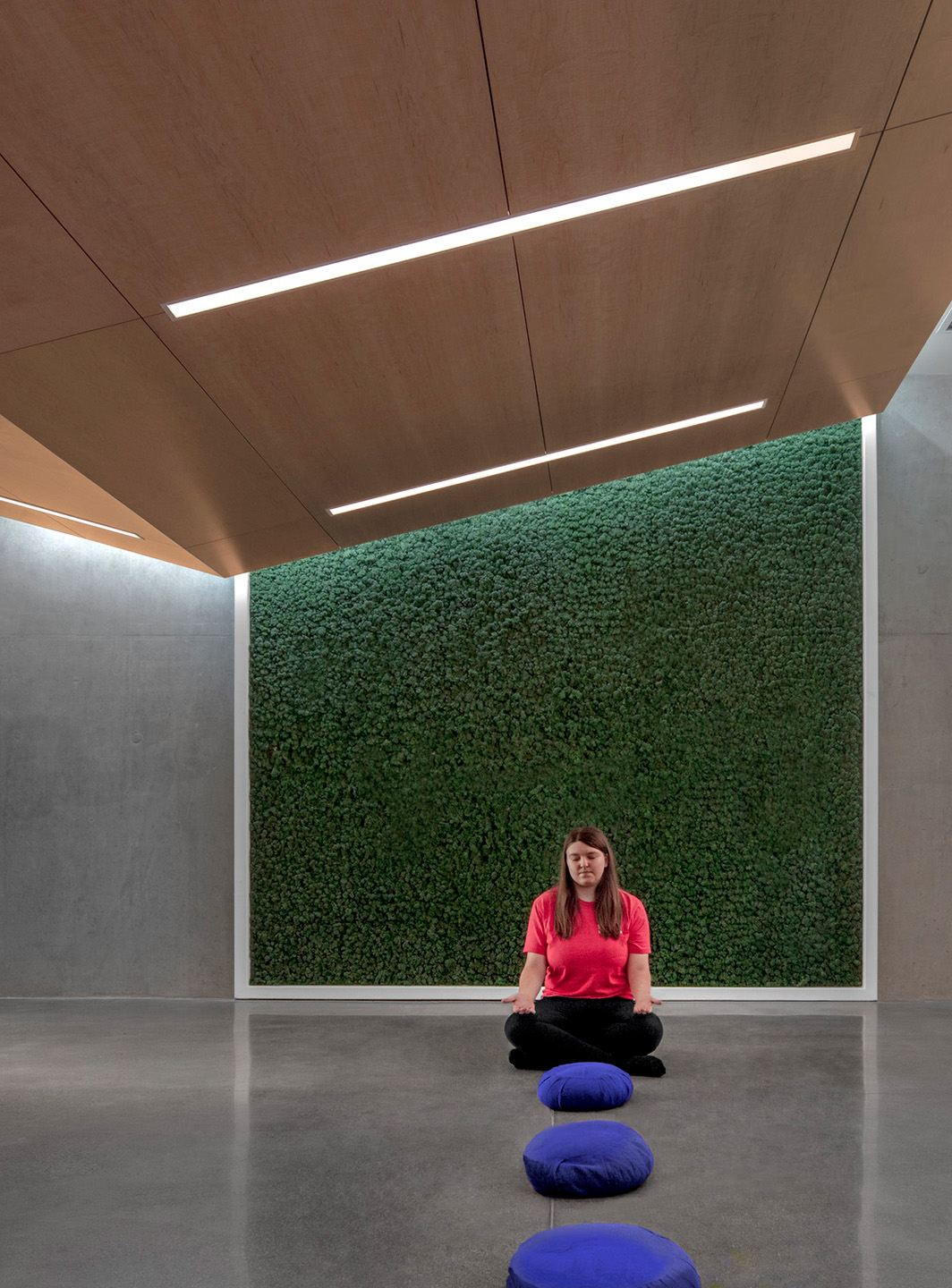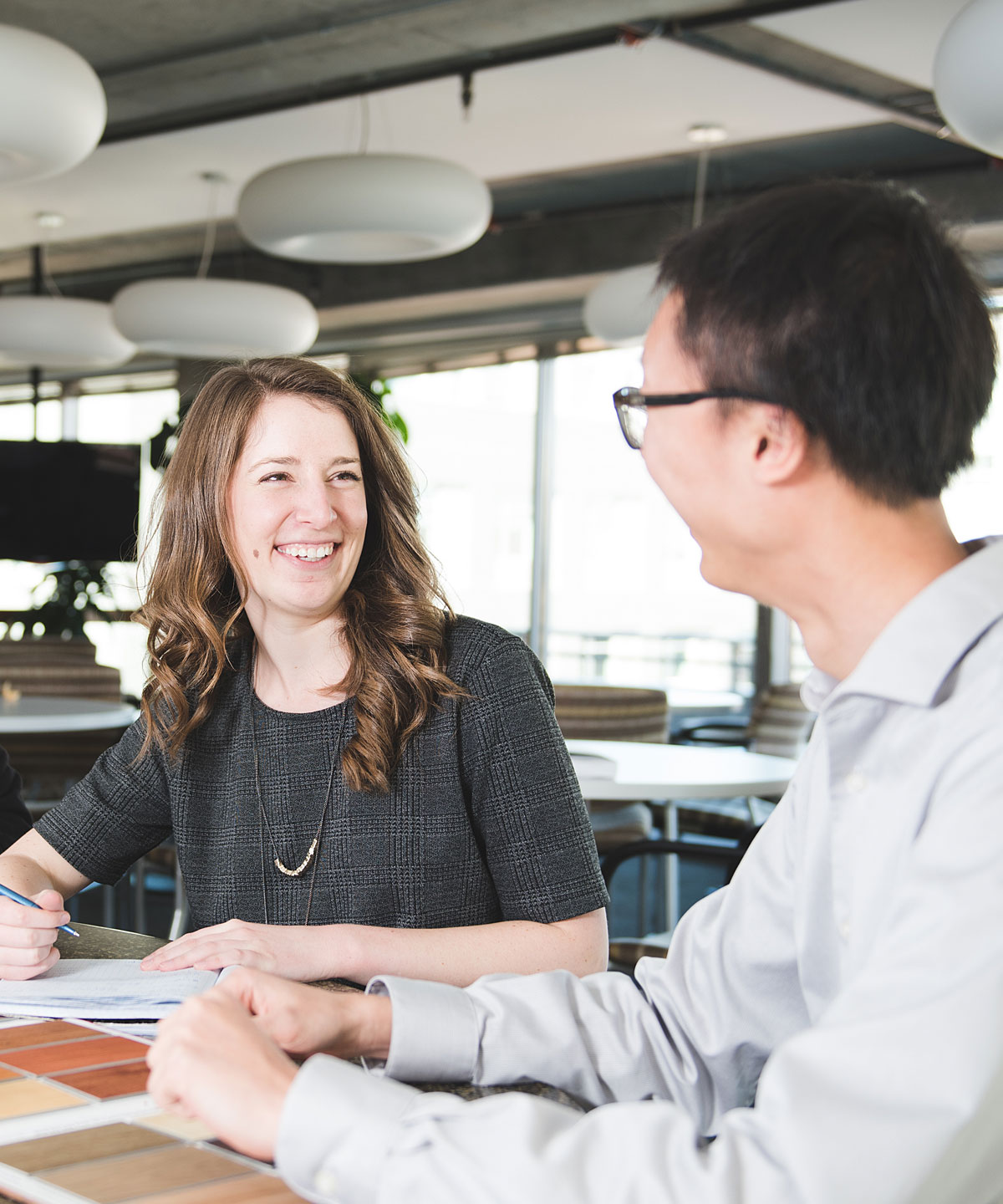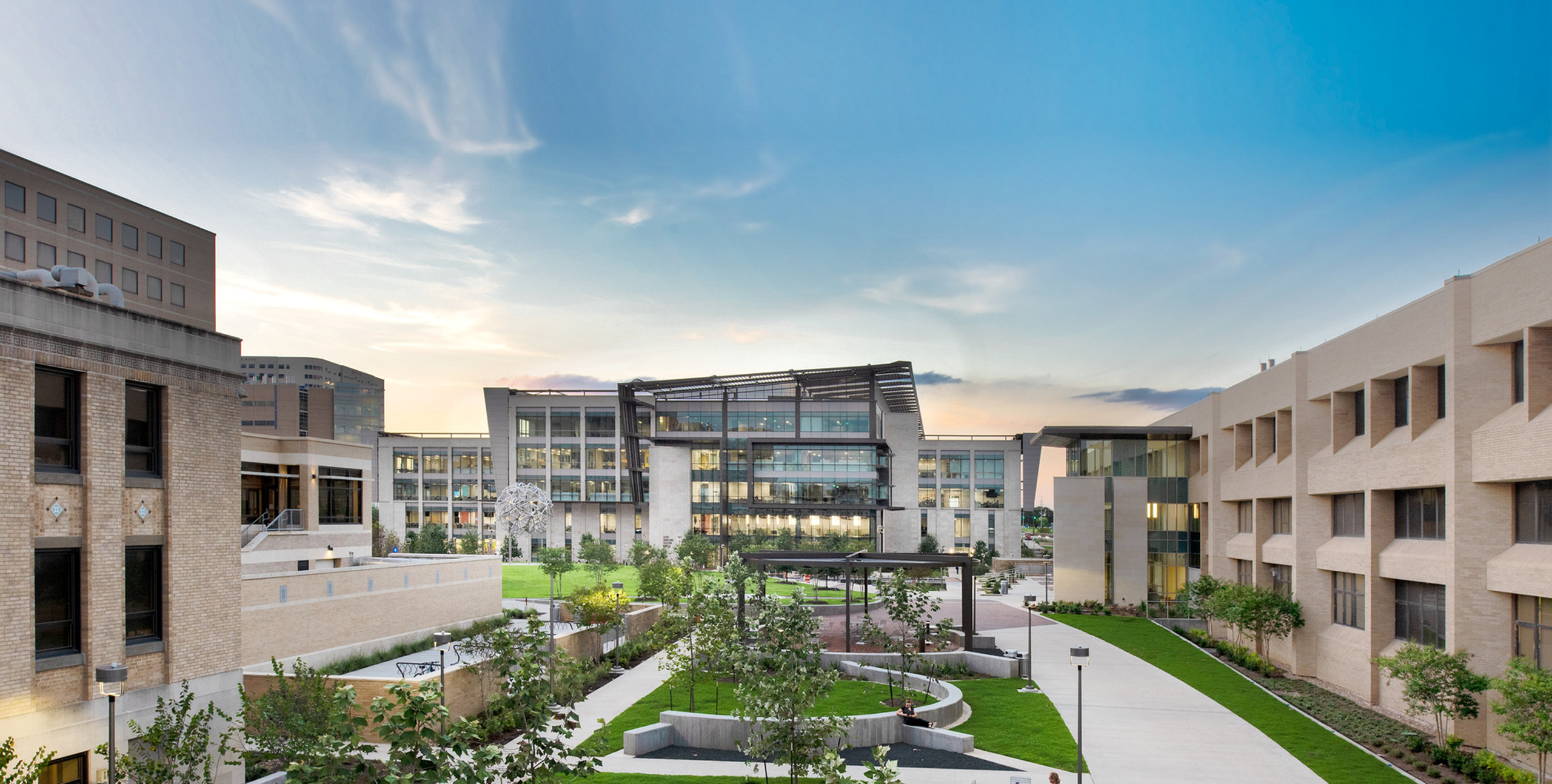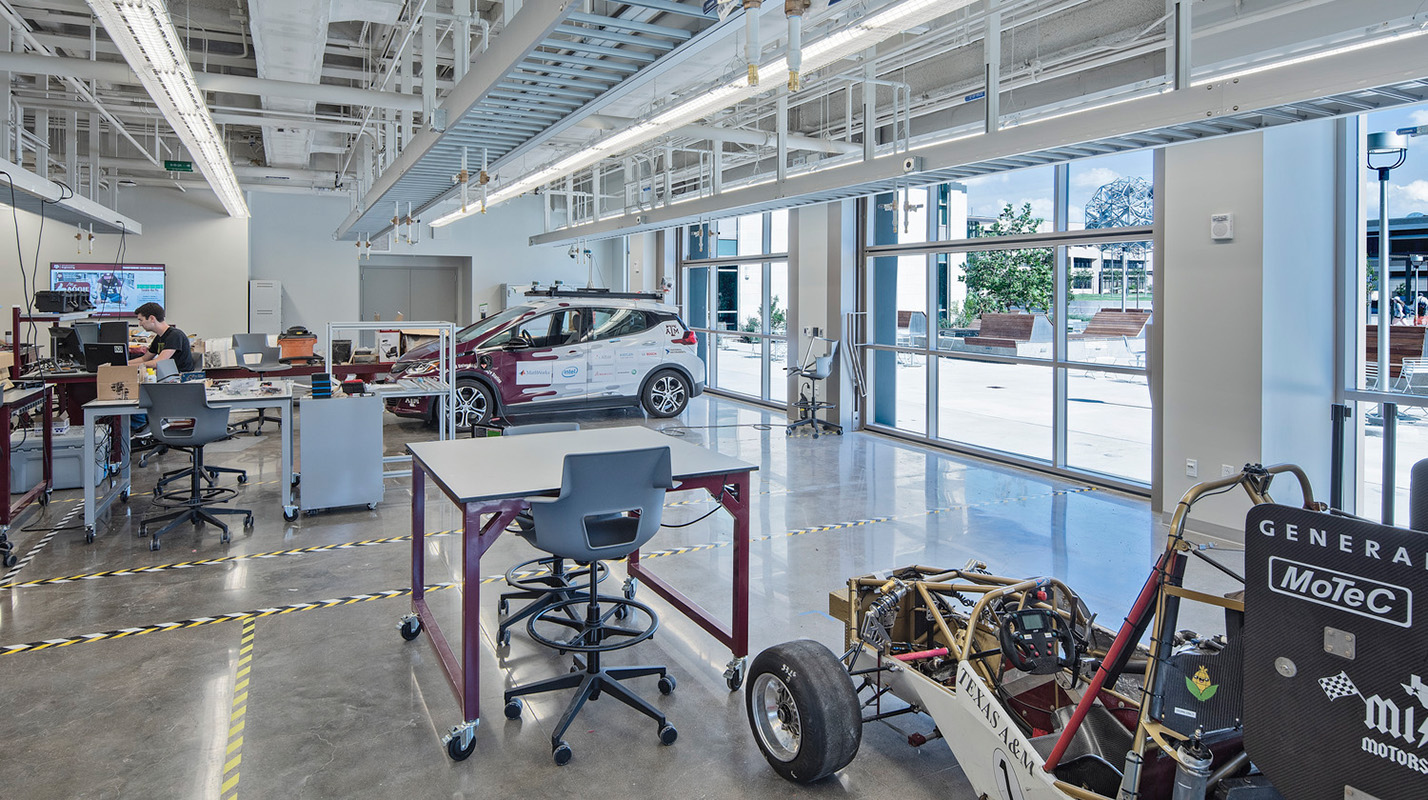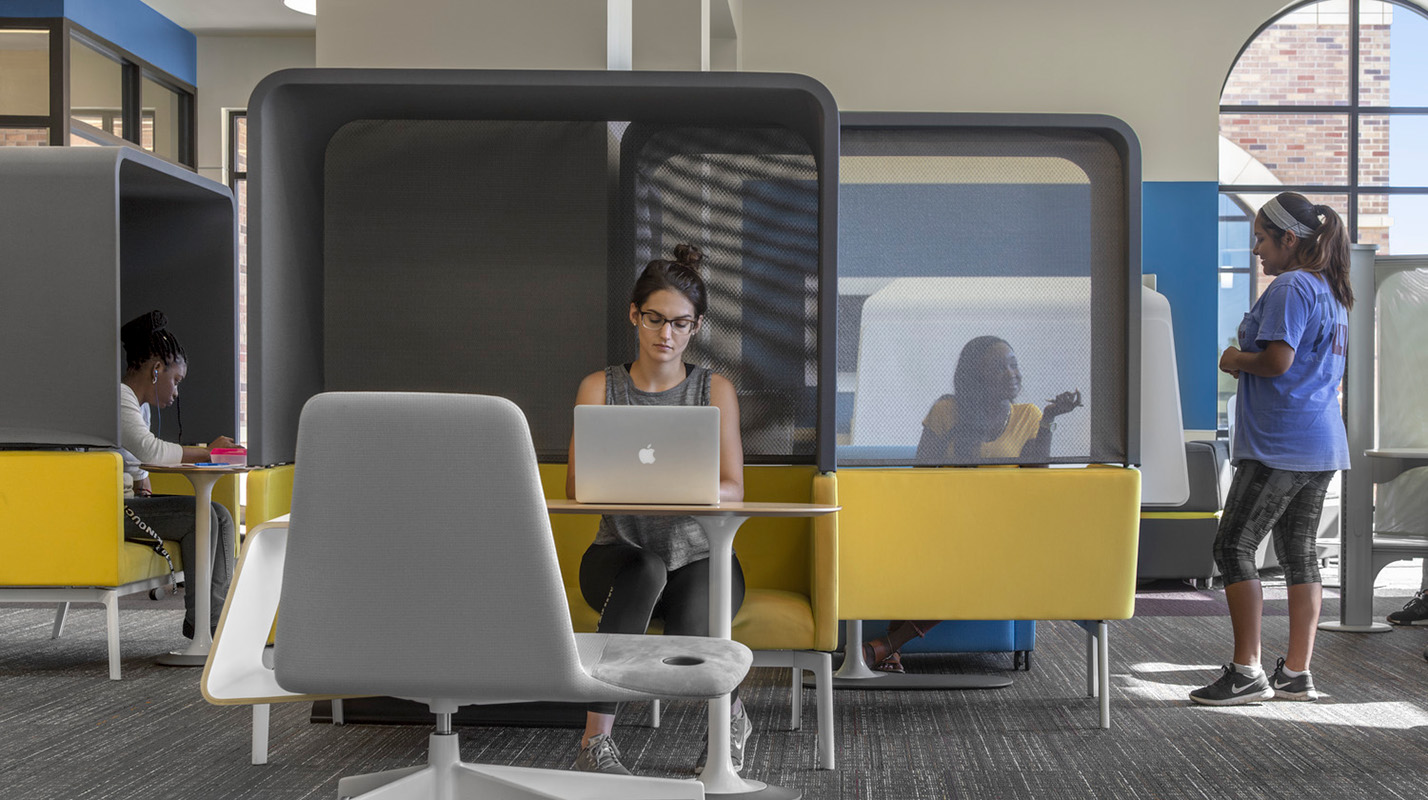Touring the Zachry Engineering Education Complex at Texas A&M University
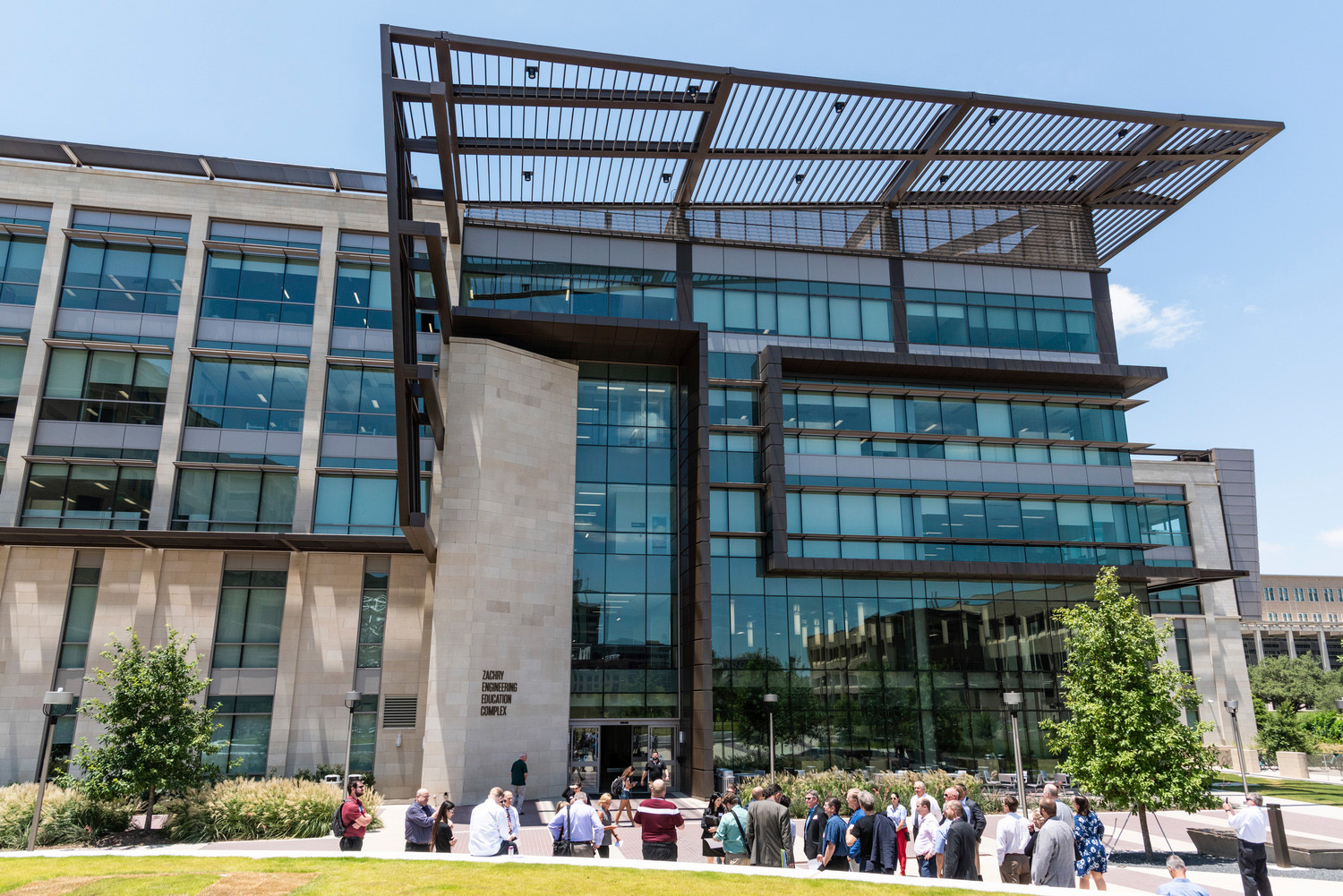
A unique look at the Texas A&M engineering student experience
80+ professionals toured 530,000 square feet of STEM facility space at Treanor’s eighth annual Science Facility Design Symposium. Hosted at Texas A&M University’s Zachry Engineering Education Complex, the symposium brought people together to explore, learn, and discuss the facility through the context of design, campus vision, and its larger impact on undergraduate education pedagogy.
Student guides navigated attendees through glass-paneled learning studios, interdisciplinary laboratories, gathering areas and a makerspace—all busy and occupied by students in summer classes.
“This is my favorite piece of artwork in the building,” one student leader said, walking backward in conversation with her tour group. “I’m not sure how much it weighs, but it’s three stories tall.”
“1,600 pounds,” replied a structural engineer within the group. He was familiar with the task.
The Prototype for Stellar Interloper (Silver Surfer) hangs three stories high over the northeast atrium, accompanied by nine other art installations throughout the building and adjacent Engineering Quad.
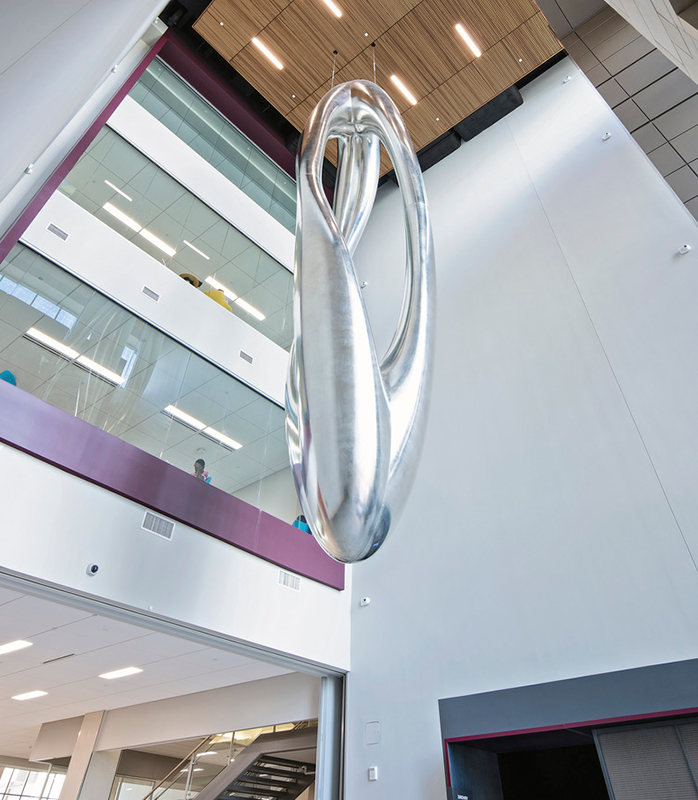
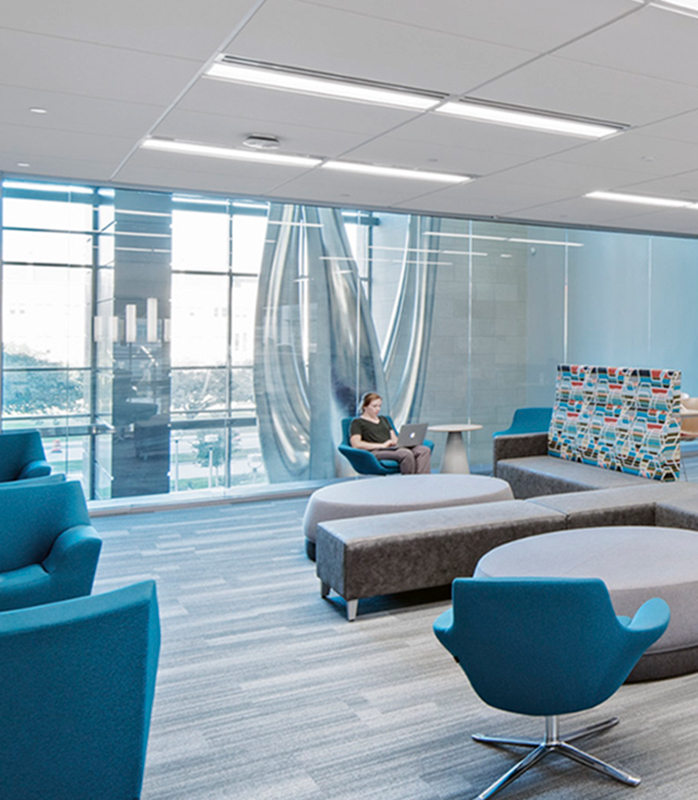
How transparency motivates and stimulates student ingenuity
The tour guides explained how students use the spaces, while groups of students on the other side of the glass worked on class projects, studied, or streamed movies in breakout spaces. A few even napped, their textbooks stacked at their feet.
“Only one student can have their hands on a machine at one time,” explained a student guide. “You’ll see here that the other two are handing him things, but not touching the machine.”
The guide continued: “I know them. We’re in the same class.”
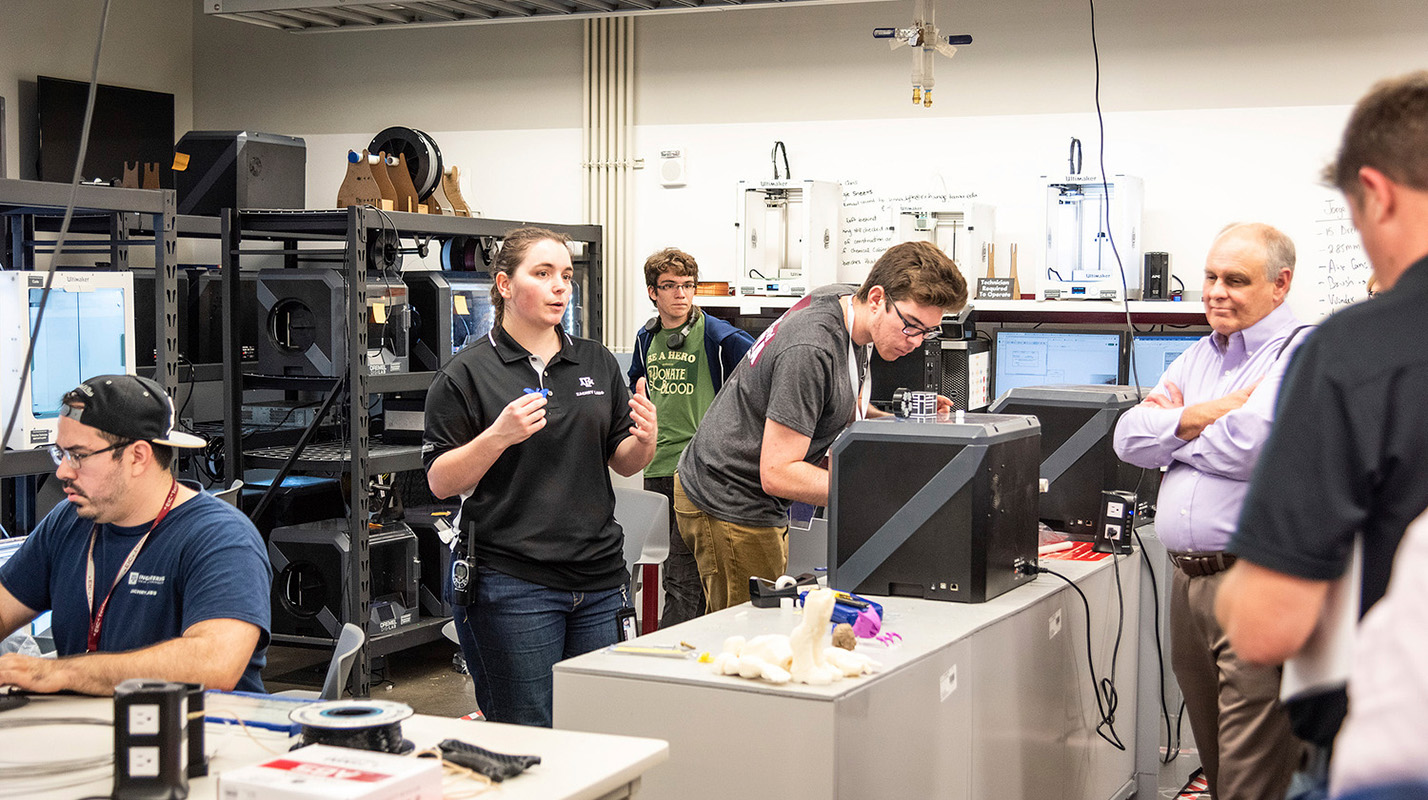
The Fischer Engineering Design Center is an open space where engineering students have access to state-of-the-art prototyping tools, equipment, material and support staff.
Walking through Zachry, the transparent design of the spaces becomes a tool allowing visitors to witness the engineering ecosystem. Instructional learning gives way to hands-on laboratory work, which gives way to adjacent study rooms and resource centers, ultimately closing a loop from instruction to construction.
“This is what this space does for students. It gives them the ability to dream.”
Rodney Boehm, Director of Engineering Entrepreneurship, Texas A&M University
Rodney Boehm, Texas A&M’s Director of Engineering Entrepreneurship, teaches a class purely focused on the marketability of students’ innovations.
He is also involved in the college’s Aggies Invent program—a 48-hour intensive design workshop where teams of students work together to solve a real-world problem, designing and creating a prototype to compete against other teams for a cash prize. Top performing teams are then encouraged to explore commercialization for their designs.
“This is something that was never here before,” said Boehm. “This is something that this building has allowed us to create.”
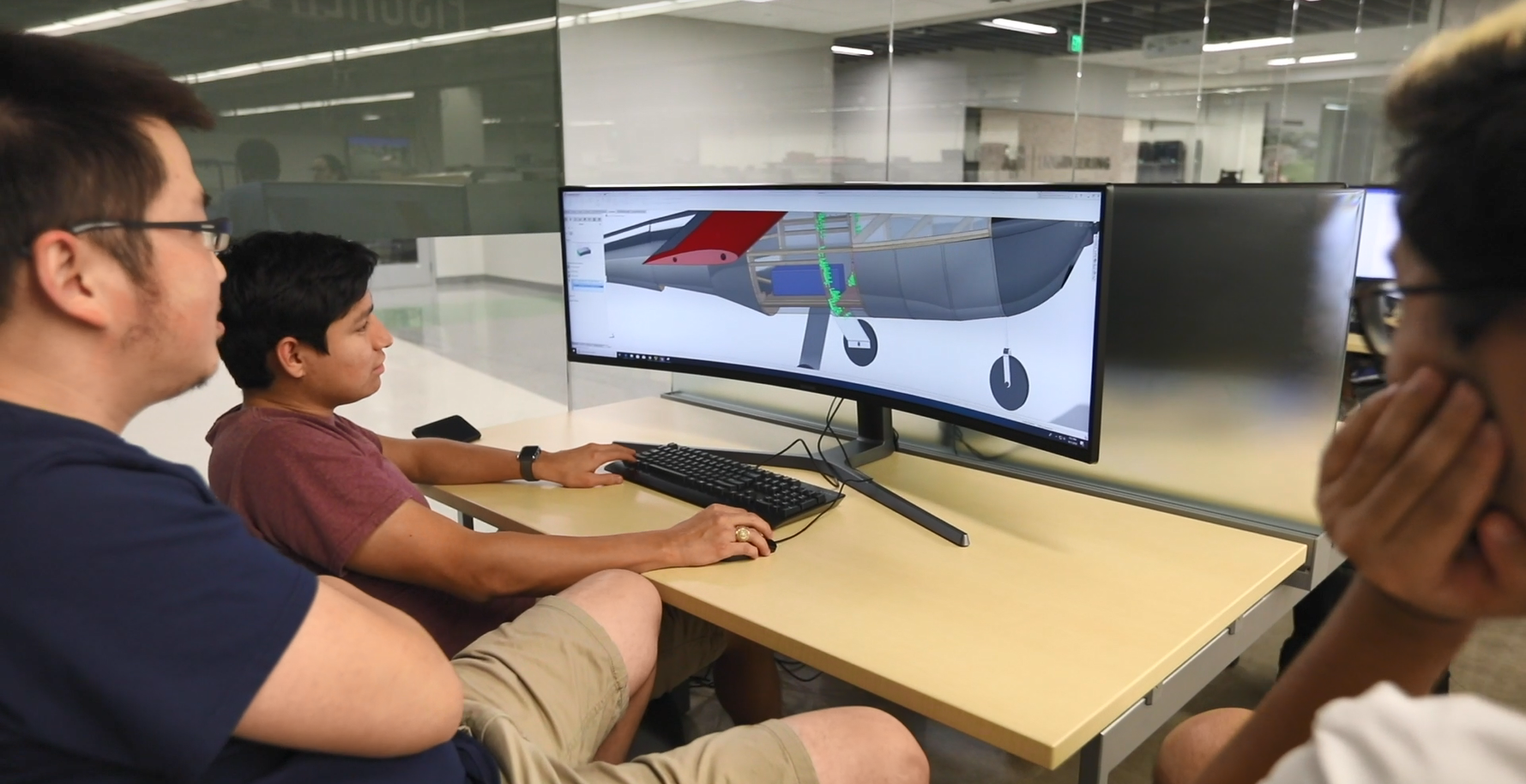
Supporting technology-centered learning techniques—and whatever the future brings
On display to event attendees was not only the magnitude and movement within the building itself, but also the orderly and efficient flow of staff resources. From technology support to high school camp coordination, the staff and faculty have adapted to this new facility—housing completely new tools and capabilities—with the spirit of opportunity and growth that is central to the college’s vision and goals.
“We’ve already seen about 20% of our faculty implementing distance learning into their process. We only expect that percentage to increase.”
Ed Pierson, Director of IT and Chief Information Officer, Texas A&M University
Creative solutions to support students throughout a five-story, 530,000-square-foot building were presented to the attendees, such as IT support vests staff wear so they can be visually flagged for assistance. Other best practices, such as Wi-Fi capabilities and planning for growth, were also discussed.
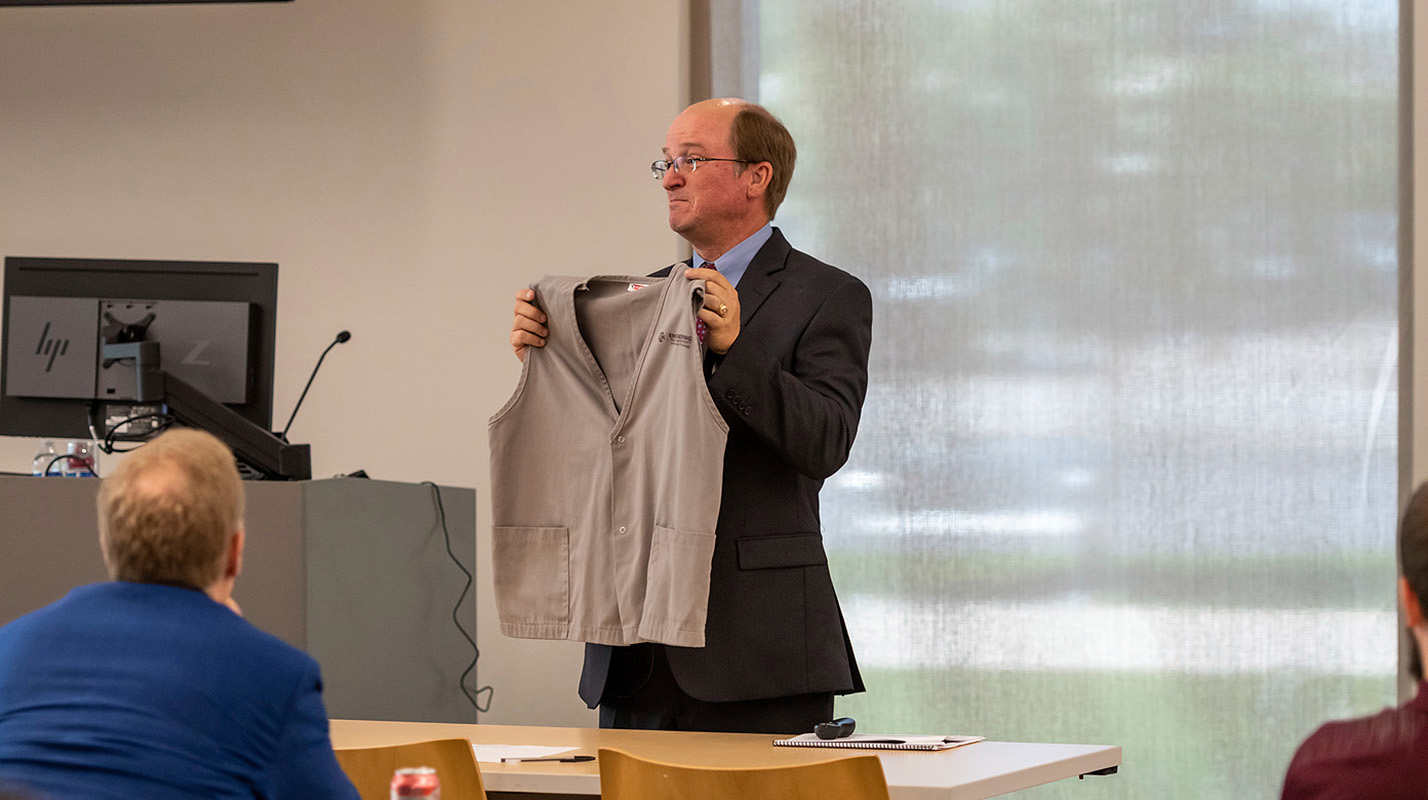
4,000 devices connect to the Zachry building during peak usage, with 24/7 demand for charging ports and network connectivity to meet students’ diverse schedules.
Weaving an iconic building into the existing campus fabric
Just as Zachry pushed the boundaries of undergraduate engineering education, it also stretched and molded its footprint into the existing campus master plan at Texas A&M University.
“Education is constantly changing,” said Texas A&M University Architect Lilia Gonzales. “It takes a lot of collaboration on the design team and the university side to find that balance between the [project] vision and the master plan.”
The original Zachry building siting was true to its time. In the 1970s, the singular, rectangular form was iconic—raised above grade level and set back deeply from the site’s edges and related pedestrian circulation. The new Zachry building and site plan sets up continuous pedestrian connections through the Engineering District and into the heart of campus. The height, character, and materials of Zachry balance the traditions of permanence and context while striking a modern approach to learning.
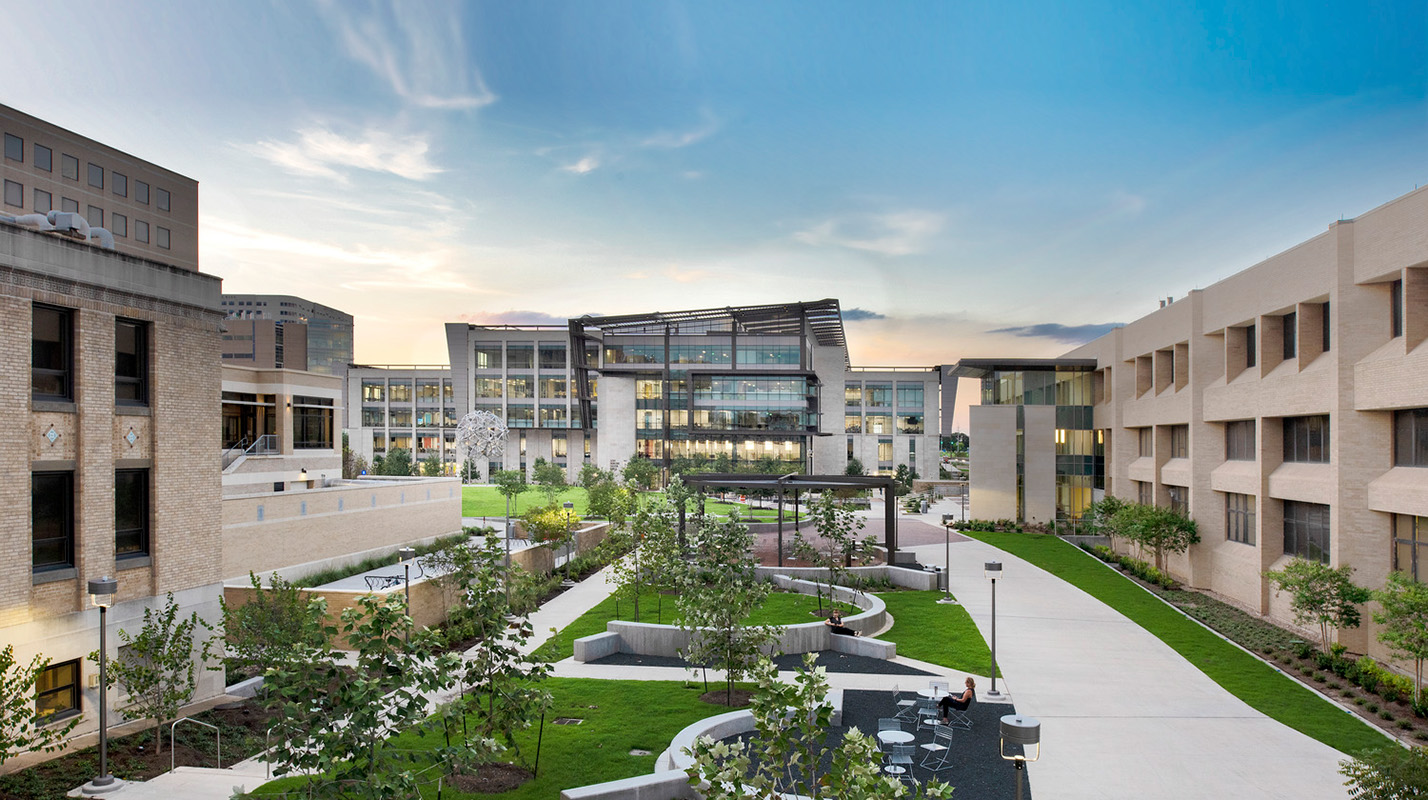
In this case, Zachry needed to adhere to campus standards while meeting the college of engineering’s ambitious goal of 25,000 students enrolled by 2025. One of the ways we did that was through a complete renovation of the existing building, with a two-story addition over the top.
The end result is a facility that looks like new while reserving the funds and space to do what Texas A&M wanted it to do: be more innovative than any other building on campus, and become the new flagship of undergraduate engineering education.
Stay on the leading edge
Stay up to date on emerging trends, research, hot topics, and more delivered conveniently to your inbox.
"*" indicates required fields
